Better Know a… Province (Guizhou) Posted by sasha on Oct 19, 2015 in Culture
It’s been a while, but our “Better Know a…” series rolls on today as we continue crossing off the provinces, municipalities, autonomous regions, and SARs that make up China. For this installment, we’re headed southwest to check out Guizhou province (贵州省 – guì zhōu shěng).
History

Ancient Jiaxiu Pavilion in Guiyang.
People have been living in the area now known as Guizhou for thousands of years, but it did not officially become a province until 1413 during the Ming Dynasty. It was at this time that local chiefs were replaced by appointed government officials, which led to rebellion from minority groups, especially the Miao and Yao. The rebels were crushed by Ming troops, with more than 10,000 Miao beheaded and several hundred thousand starving to death. More unsuccessful rebellions would follow in the Qing Dynasty.
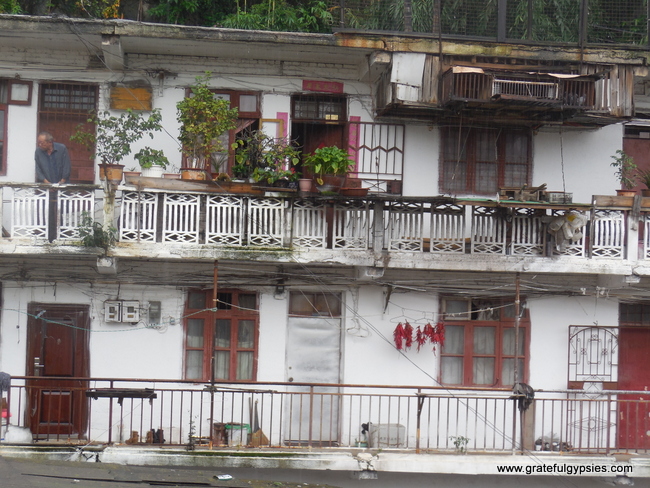
A look at some common homes in Guizhou.
In more recent history, Guizhou was the site of an important moment in the Chinese Civil War. In 1935, the Communist Party held a conference in the city of Zunyi and established Mao Zedong as their leader. When Mao and the communists took over, industry moved in to places like Guizhou in order to better protect from potential American or Soviet attacks. Unfortunately the good times didn’t continue – geographical factors led to the province mostly being left behind in the country’s recent economic boom years. Development is slowly but surely finding its way to Guizhou, and there are even high-speed trains linking the province up with other parts of China.
Geography
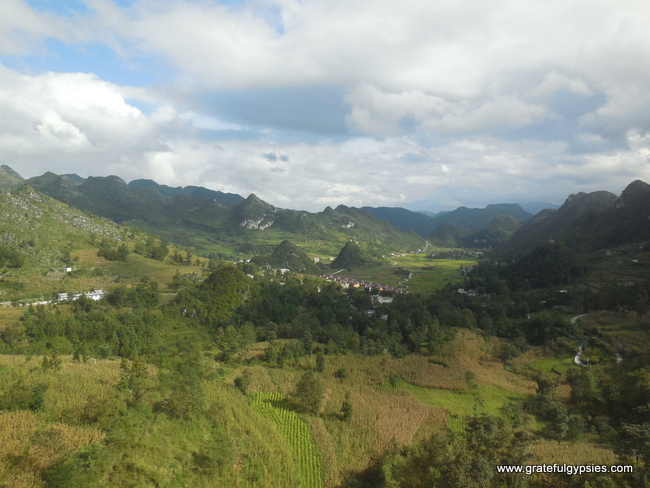
Karst mountains abound in Guizhou.
Guizhou is a landlocked and rather mountainous province. It shares a border with Sichuan and Chongqing (north), Yunnan (west), Guangxi (south), and Hunan (east). In general, the western part of the province is more mountainous than other areas, as it forms part of the Yunnan-Guizhou Plateau (云贵高原 – yún guì gāo yuán). The landscape here is dominated by unique karst formations. Thanks to its rugged landscapes, development has been slower in Guizhou than in many parts of China, particularly in rural areas. Amidst the many mountains and valleys, there are also hundreds of basins in Guizhou. Thanks to its sloping terrain, rivers in this province actually flow in three directions – north, east, and south.
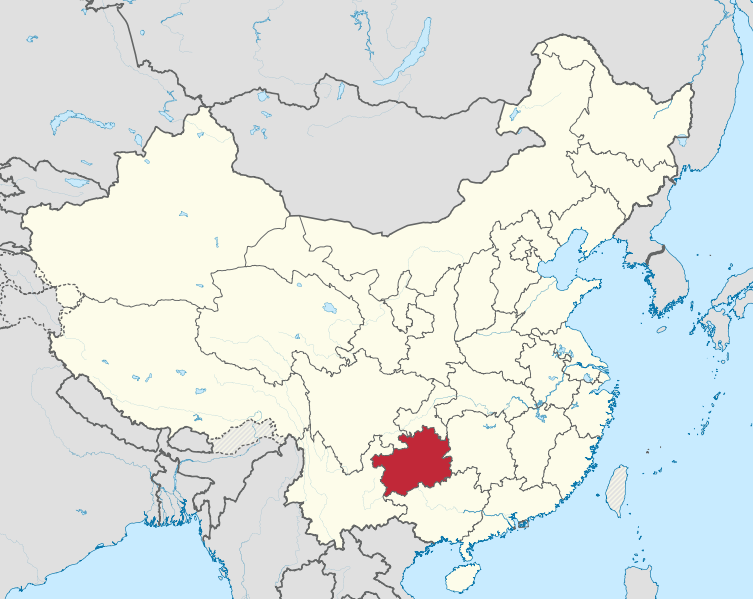
Guizhou on the map.
Climate
Guizhou has a subtropical humid climate, with warm summers and mild winters. It’s quite pleasant year round, without much difference between the seasons. The average annual temperature here ranges from 10 to 20 °C. Thanks to its high altitude and abundance of cloudy days, the capital city of Guiyang has a lower average temperature in July than other cities on the same latitude. Despite this high elevation, Guizhou doesn’t have a lot of snowy or freezing days. The province does, however, see a lot of rainfall (annual average of 35-60 inches), with more rain coming in the southern and eastern parts of the province.
Population
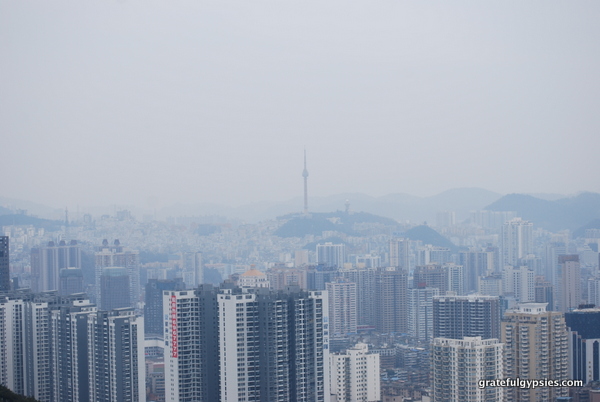
City scene of the capital, Guiyang.
As of the last census in 2010, the population of Guizhou was just under 35 million, making it 19th on the list in China. While over 60% of the population are Han, Guizhou is one of the most diverse provinces in the country, as it’s home to over 40 ethnic groups. The largest ethnic minority group are the Miao (12%), followed by the Buyi (8%) and Dong (5%). There are also dozens of ethnic groups in Guizhou that are not officially recognized by the government of China.
Culture
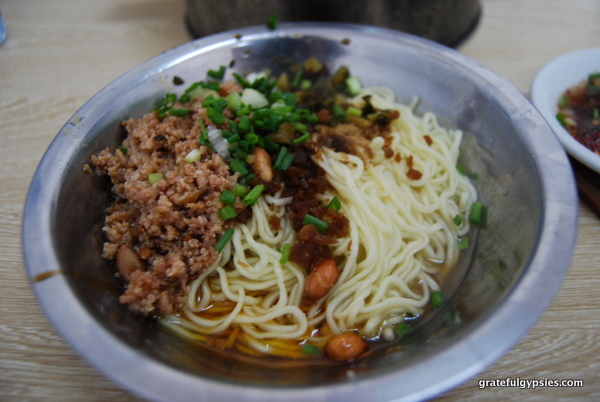
A yummy bowl of noodles.
As you may imagine, with so many different ethnic groups calling this province home, the culture of Guizhou is also quite diverse. With so many different groups, there are tons of festivals celebrated around the province every year. For example, the Dong people celebrate the Sanyuesan (三月三 – sān yuè sān) festival on the 3rd day of the 3rd lunar month (hence the name). For a complete list of major festivals in Guizhou, click here. As far as religion, about 32% of the people in Guizhou follow an ancestral religion.
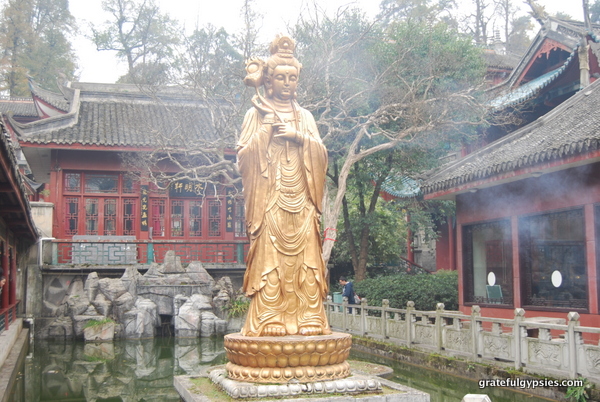
Hongfu Temple in Guiyang.
Guizhou cuisine (贵州菜 – guì zhōu cài), also known as Qian cuisine (黔菜 – qián cài), is similar to the food of Sichuan and Hunan in that it’s quite spicy and pungent. In general, Guizhou cuisine is a mixture of sour and spicy. Guizhou is also home to perhaps the most famous brand of Chinese liquor – Maotai (茅台 – máo tái).
Famous Places
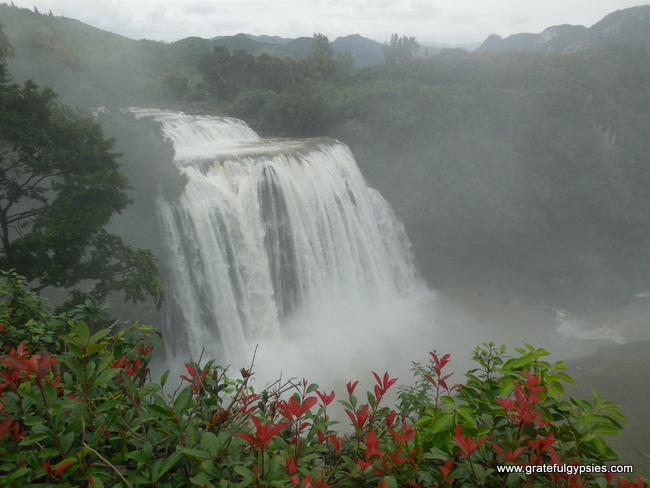
An epic waterfall.
Guizhou is very much off-the-beaten path when it comes to traveling in China, but you’ll be rewarded with beautiful scenery and interesting culture should you manage to make it there. Perhaps the most famous attraction in the province is the Huangguoshu waterfall (黄果树瀑布 – huáng guǒ shù pù bù), the largest waterfall in Asia. You can visit the falls from the town of Anshun and easily combine it with a trip to the Dragon Palace Cave (龙宫洞 – lóng gōng dòng).
Another interesting place to visit is Zhenyuan Ancient Town (镇远古镇 – zhèn yuǎn gǔ zhèn), home to the Miao people. Thanks to its location on a river, the town plays host to a very festive Dragon Boat Festival every year. This is regarded as one of the best places to take part in this traditional festival in all of China.
Across the province, you’ll also find some of the famous Wind & Rain Bridges (风雨桥 – fēng yǔ qiáo). The most notable is called the Chengyang Bridge, located in Sanjiang County. These bridges are an architectural masterpiece, and an integral part of the local culture.
Guizhou may be one of the poorest and least developed places in China, but it’s certainly a fascinating one. Far from the skyscrapers and big-city buzz of places like Beijing and Shanghai, a visit to Guizhou can be full of nature and ethnic minority culture.

Build vocabulary, practice pronunciation, and more with Transparent Language Online. Available anytime, anywhere, on any device.
About the Author: sasha
Sasha is an English teacher, writer, photographer, and videographer from the great state of Michigan. Upon graduating from Michigan State University, he moved to China and spent 5+ years living, working, studying, and traveling there. He also studied Indonesian Language & Culture in Bali for a year. He and his wife run the travel blog Grateful Gypsies, and they're currently trying the digital nomad lifestyle across Latin America.




Comments:
jolly:
hello Sasha, I’ve read about your blog. I have a question to ask you. Is it safe in Guizhou? just want to know coz am gonna travel this place in the future
sasha:
@jolly I was only in Guiyang for one night in my time in China. It seemed like a very nice and safe city, though! My wife also took a train to visit some waterfalls near Anshun and she had a great time as well. I think overall it’s quite safe!